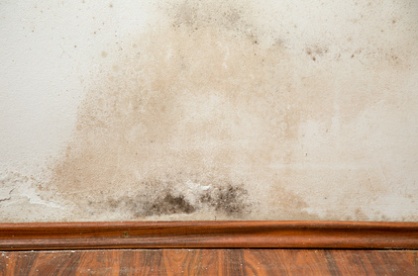Find a Mold Specialist Now
Click or Call, Toll-Free 24/7
Absidia Corymbifera
Absidia corymbifera, sometimes referred to as absidia ramosa or mycocladus corymbiferus, is a common strain of mold found in homes all across the U.S. Most strains of mold spread rapidly but this one releases an exceptionally large number of spores and spreads even faster than most. It has been linked to numerous health problems, some of them quite serious.
Where is Absidia Corymbifera Found?
It is found all around the world, mostly in indoor settings. It is occasionally found outdoors, as well, but is much more common inside buildings. In homes, it’s most commonly found in building materials with high cellulose content, such as drywall. It might be found on damp papers or rotting wood. It may also be found growing on water-damaged mattresses, carpets, or other fabrics. In addition, it has occasionally been found in such things as potting soil and bird droppings, as well as on spoiled food such as bread and produce.
How Does Absidia Corymbifera Affect One’s Health?
While anyone can get sick from exposure to mold, some people are at greater risk, including elderly folks, infants, pregnant women, and people with pre-existing health problems such as respiratory disorders and disorders affecting the immune system.
 Mold on Drywall
Mold on DrywallAs with all types of mold, this one can irritate your respiratory tract and cause symptoms like coughing, sneezing, a sore throat and asthma attacks. Exposure may lead to infections such as sinusitis, bronchitis or pneumonia. Treatment may include over-the-counter and/or prescription medications to treat symptoms as well as antifungal and/or antibiotic medications. These conditions can often be treated on an outpatient basis, although sometimes people must be hospitalized to treat severe cases of pneumonia or other complications.
This strain of mold can also cause a serious infection called mucormycosis (a condition that used to be referred to as zygomycosis). Mucormycosis is often life-threatening, with a mortality rate of at least 50 percent (sometimes greater, depending on where in the body the infection develops). Mucormycosis may develop in the sinus cavities or lungs, if the mold has been inhaled. Mucormycosis of the facial sinuses is particularly dangerous because of the close proximity to the brain. Cutaneous mucormycosis may develop if mold enters the body through a cut or other opening in the skin. Mucormycosis of the gastrointestinal tract may also occur, probably if mold has been ingested, which may happen if you accidentally eat mold-contaminated food (you can read more about digestive issues related to mold exposure).
Mucormycosis most commonly occurs in immunocompromised individuals and those with pre-existing serious health problems, which helps account for the high mortality rate. Prompt diagnosis and treatment is necessary in order for patients to survive and those that do survive may experience life-long health problems as a result of the infection. Treatment typically involves antifungal medication and patients often require surgery in order to clear out infected areas, as well.
Removing Absidia Corymbifera from Your Home
Removing mold from your home as soon as possible may prevent the development of mold-related illness. Because this particular strain of mold spreads so fast, it’s important to have it removed right away. Even a minor delay can give the mold time to spread to other areas of your home, making the removal process more difficult, more time-consuming, and more costly.
If you’re experiencing mold-related health problems or if you are at increased risk for such health problems, it is recommended that you not attempt to remove mold from your home on your own. The process of removing mold will further expose you to mold spores that can make you sick (or make your condition worse, if you are already experiencing symptoms of mold-related illness). Since this particular strain of mold can cause such severe, even life-threatening, health problems, we encourage you to call in a professional for assistance. Of course, if you have developed mucormycosis, you are probably in the hospital and will be in no shape to handle the mold removal yourself.
You can schedule a free in-home consultation with a mold removal professional to discuss your needs. An experienced professional will visit your home, inspect the mold growing there, and advise you about the work that needs to be done. You’ll get a detailed estimate for the cost of the work, but the consultation is free and you’re under no obligation. You’ll also get your questions answered and receive valuable advice from an expert in the field. Follow the link to find qualified mold removal professionals offering free in-home consultations in your area.
Return From Absidia Corymbifera To Our Main Mold Types Page
Privacy Policy Terms and Conditions Accessibility Do Not Sell My Information Disclaimer Contact Us




